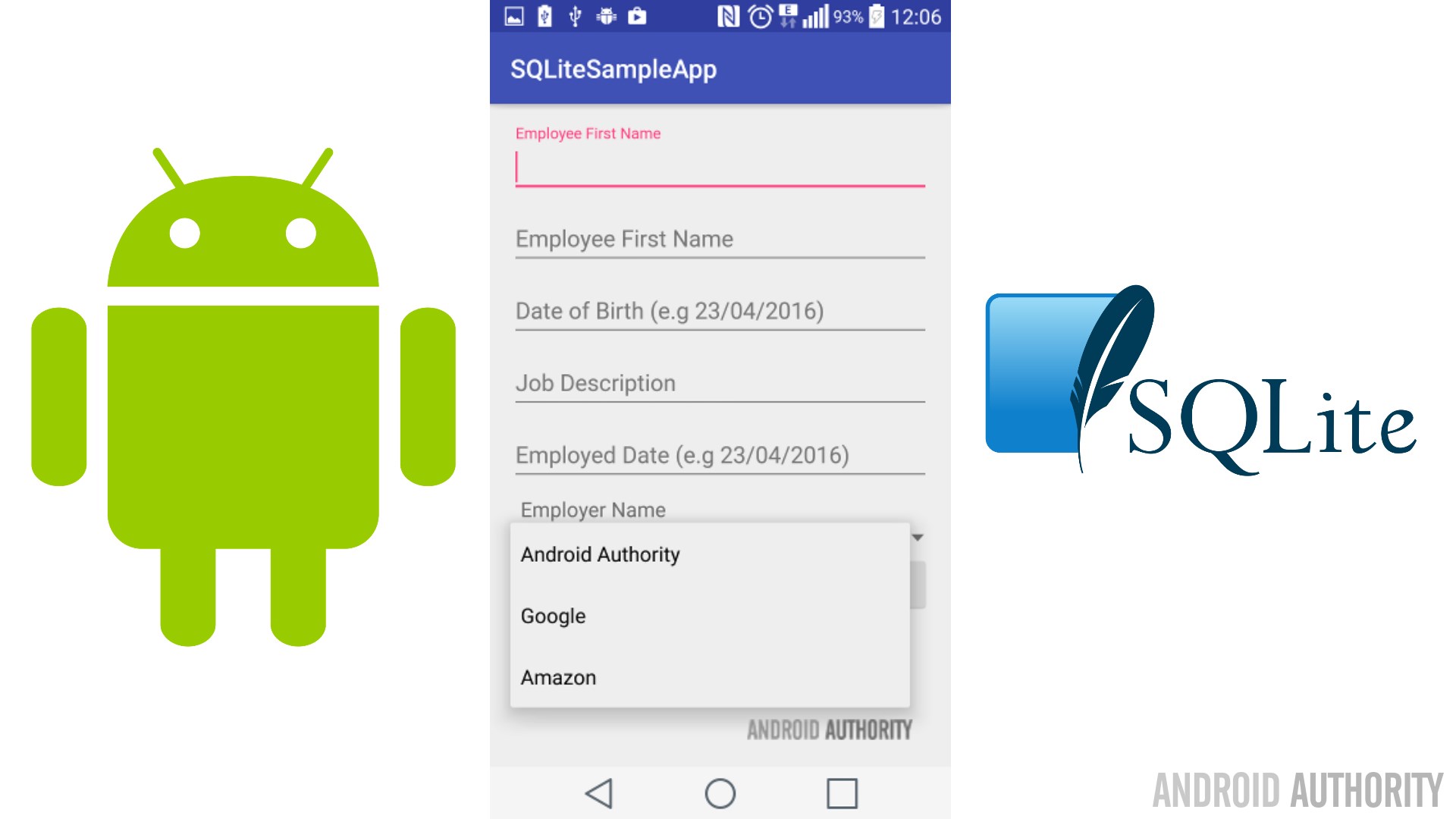

- #Android sqlite database update#
- #Android sqlite database upgrade#
- #Android sqlite database android#
- #Android sqlite database password#
String password = resultSet.getString(1) String username = resultSet.getString(0) We can move the cursor forward and retrieve the data.Ĭursor resultSet = mydatbase.rawQuery("Select * from TutorialsPoint",null) We will call a method of this class called rawQuery and it will return a resultset with the cursor pointing to the table. We can retrieve anything from database using an object of the Cursor class.
#Android sqlite database update#
This method not only insert data, but also used to update or modify already existing data in database using bind arguments Another method that also does the same job but take some additional parameter is given below Sr.No This will insert some values into our table in our database. Mydatabase.execSQL("INSERT INTO TutorialsPoint VALUES('admin','admin') ") Mydatabase.execSQL("CREATE TABLE IF NOT EXISTS TutorialsPoint(Username VARCHAR,Password VARCHAR) ") We can create table or insert data into table using execSQL method defined in SQLiteDatabase class. This method is similar to above method but it takes the File object as a path rather then a string. OpenOrCreateDatabase(File file, SQLiteDatabase.CursorFactory factory) This method is equivalent to openDatabase method.

It not only opens but create the database if it not exists. OpenOrCreateDatabase(String path, SQLiteDatabase.CursorFactory factory) It is similar to the above method as it also opens the existing database but it does not define any handler to handle the errors of databases OpenDatabase(String path, SQLiteDatabase.CursorFactory factory, int flags) The common flags mode could be OPEN_READWRITE OPEN_READONLY This method only opens the existing database with the appropriate flag mode. OpenDatabase(String path, SQLiteDatabase.CursorFactory factory, int flags, DatabaseErrorHandler errorHandler) SQLiteDatabase mydatabase = openOrCreateDatabase("your database name",MODE_PRIVATE,null) Īpart from this, there are other functions available in the database package, that does this job. It returns an instance of SQLite database which you have to receive in your own object.Its syntax is given below In order to create a database you just need to call this method openOrCreateDatabase with your database name and mode as a parameter. The main package is that contains the classes to manage your own databases Database - Creation In order to access this database, you don't need to establish any kind of connections for it like JDBC,ODBC e.t.c Database - Package

SQLite supports all the relational database features.
#Android sqlite database android#
Android comes in with built in SQLite database implementation. We define a DBManager class to perform all database CRUD(Create, Read, Update and Delete) operations.SQLite is a opensource SQL database that stores data to a text file on a device. Hence we can figure out the best way to convert the database from the old schema to the new one.

Super(context, DB_NAME, null, DB_VERSION) Constructor : This takes the Context (e.g., an Activity), the name of the database, an optional cursor factory (we’ll discuss this later), and an integer representing the version of the database schema you are using (typically starting from 1 and increment later).For that we’ll need to create a custom subclass of SQLiteOpenHelper implementing at least the following three methods.
#Android sqlite database upgrade#
SQLiteOpenHelper wraps up these logic to create and upgrade a database as per our specifications. We will have option to alter the database schema to match the needs of the rest of the app.


 0 kommentar(er)
0 kommentar(er)
